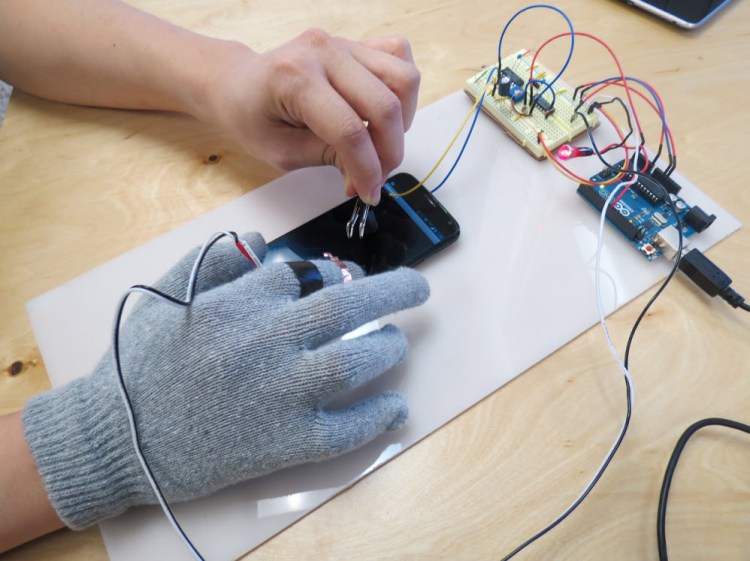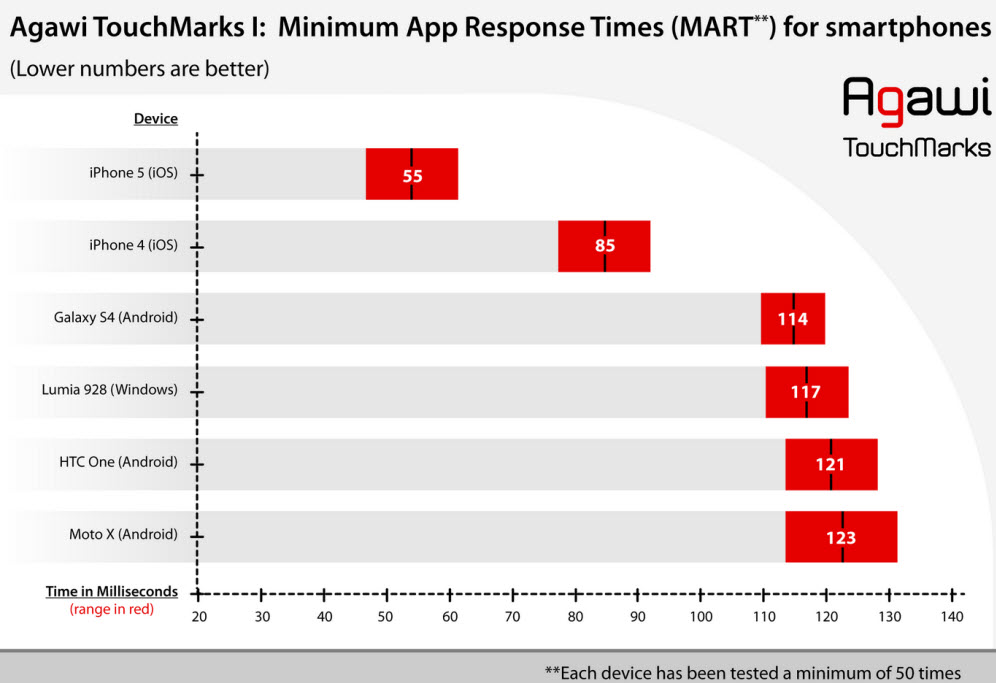Apple’s iPhone 5 is 2.5 times faster at responding to touches than Google Android devices, according to a benchmark test by game and app streaming firm Agawi.
The results confirm what users believe about the devices, and they highlight a feature that is usually left out of technical comparisons.
In its first TouchMarks benchmark test, the iPhone 5 responded to touches at an average time of 55 milliseconds, compared to 85 milliseconds for the iPhone 4. The closest Android device was the Samsung Galaxy S4 at 114 milliseconds.
“Apple trounced the competition,” said Peter Relan, chairman of Agawi. “There is this whole other dimension of responsiveness that Agawi cares about.”
Agawi studied the iPhone 5 and compared it to Android touchscreen smartphones such as the Google MotoX, the HTC One, and the Samsung Galaxy S4. It also compared results for the Nokia Lumia 928 on Windows Phone, which came in at 117 milliseconds. The company started doing the tests as part of its work in delivering Flash-based Facebook games and other apps as interactive streams to iOS devices.
The TouchMarks benchmark measures the touchscreen latency, which is as important to users as display quality. Most competitive discussions focus on pixels per inch and quality of image. The TouchMarks benchmark measured the minimum app response time [MART] scores. The benchmark tests the lightest possible apps, measuring how immediately they respond on a given device.
“Even a two-year old iPhone 4 beat out the other Android devices,” Relan said. “You expect this from Apple’s design team, while others may view their responsiveness as good enough. Now we know why the Android touch keyboard is not as snappy.”
Agawi is making the benchmark and methodology available on its web site. Agawi’s AppGlimpse division plans to measure other phones in the future, including the upcoming iPhone 5S and iPhone 5C. It will also measure response times for games, tablets, and apps streamed from the cloud.
“App responsiveness is judged by how quickly the app can respond to your inputs,” said Rohan Relan, cofounder and CEO of Agawi. “Smartphones with touchscreens that have lower MART scores feel snappier. This is probably why, to many users, the iPhone keyboard feels more responsive than an Android phone keyboard.”
Agawi specializes in tech that runs rich, interactive apps in the cloud and streams them to iOS, Android, and Windows Phone 8 devices. The company’s team of engineers test responsiveness so they can measure just how acceptable the cloud-based content is to users. The team built a device dubbed Touchscope that can measure response times to a level of accuracy that is plus or minus 4 milliseconds. It then adds the cloud processing response time to calculate the actual delays experienced by users.
VentureBeat's mission is to be a digital town square for technical decision-makers to gain knowledge about transformative enterprise technology and transact. Learn More


